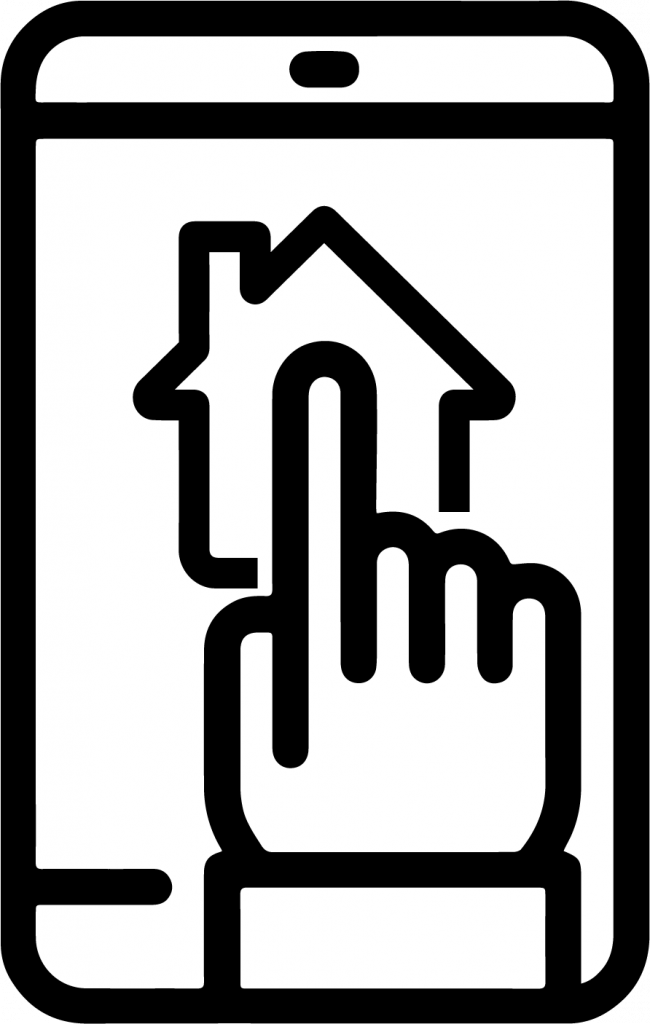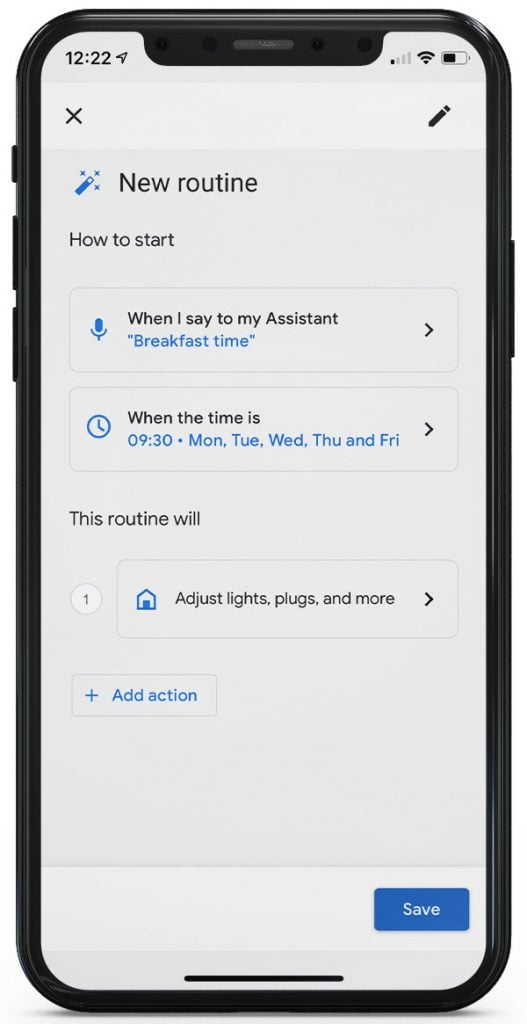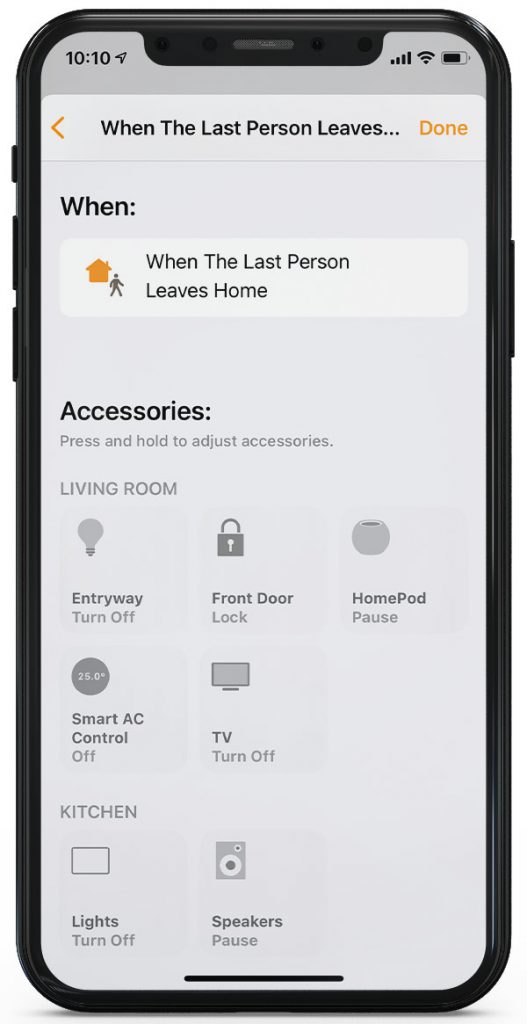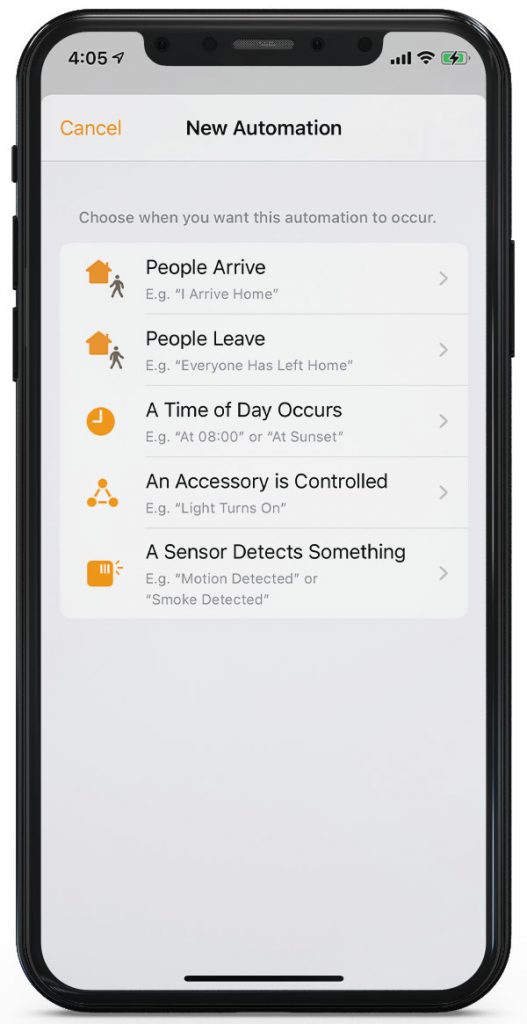Having smartphone app control of your devices is just one facet of a smart home. When creating new smart home projects, our aim is to improve the quality of daily life by having devices respond to multiple forms of controls, integrated in a natural way to every homeowner’s routines.
This can be achieved mainly through automations and remote controls.
Setting up a smart home is all about opening up new ways to control your devices. In the past, you’d flip a switch to turn a light on and off. With a smart home, there are now multiple ways to control them.
Multiple device control
Room and Zone-based Control

Organize your smart devices by assigning them to rooms – e.g. living room, kitchen, bedroom. It’ll be easier to navigate your home app, and you can control all devices in a room with a voice command or other controls. Zones are a collection of rooms, e.g. downstairs.
Scenes and Routines

Set a group of devices to be turned on or off to suit a particular mood or function. All devices will be controlled simultaneously upon triggering the scene. For example, a “Movie time” scene could turn off all your lights, and turn on your TV and ambient lights.
Whole Home Control

When all your devices are smart, you’ll be able to control your whole home in one command or automation. Imagine leaving the house, and having every single one of your lights, AC, fans, and other accessories turning themselves off automatically.
Remote Controls
Smartphone Control

Use the apps on your smartphone to control your devices, add scenes, and configure automations. Your smart accessories are now easily accessible at your fingertips – even if you’re not at home. You can even set scenes and use voice commands!
Wireless Switch Control

Make your home devices even more accessible by adding dedicated wireless smart switches, which work as two-way switches – just without the wires. You can put one on your bedside table to turn off your bedroom lights.
Voice Commands

Smart speakers and phone voice assistants can now control your devices and trigger routines and scenes. While not everyone fancies speaking to a machine, it’s a surprisingly useable hands-free control – our parent clients can testify!
Automations
Time-based Automation

Set a smart device to turn on or off at a specific time, on specified days. You can also choose “Sunset” or “Sunrise”, which varies by the day. Devices can also be set to turn itself off after a set amount of time.
For waking up: Set "Wake up" scene at 8.00 a.m., only on weekdays. - OPEN curtains - Turn OFF AC - Turn ON water heater - Play music
For decorative lights that look nice but have no real lighting function: Turn ON decorative shelf lights at 7.30 p.m. Turn OFF decorative shelf lights at 10.00 p.m.
For comfortable sleep: Turn OFF AC at 1.30 a.m. Turn ON ceiling fan at 1.30 a.m.
To get ready for bed: Set "Wind down" scene at 9.30 p.m. - Turn OFF Living room track lights, pendant lights - Turn ON living room ambient lights - Turn ON all bedroom AC
For water storage heaters: When water heater is turned ON, turn OFF water heater after 20 minutes.
Sensor Automation

Set devices to turn on or off when a sensor detects something, such as motion sensors triggering lights.
For bathrooms and corridors: IF motion is detected, turn ON lights IF no motion is detected for 3 minutes, turn OFF lights
For store rooms and wardrobes: IF door sensor detects open, turn ON lights IF door sensor detects close, turn OFF lights
For cooling: IF temperature is above 29C, turn ON fan
For bathrooms: IF humidity is above 85%, turn ON bathroom fan circulator
Geolocation Automation

Set devices to turn on or off, or trigger scenes based on your geolocation (as reported by your phone).
When the last person leaves home: Turn everything OFF
When the first person arrives home: Turn ON entryway lights Turn ON living room fan Turn ON water heater
Conditions
Sometimes, you may not want to trigger automations at certain timings, or if nobody is at home. You can use conditions as the requirements for an automation to run, and these are configured directly in the automations themselves. This gives you very fine control over your smart home systems.
For bathrooms and corridors: IF motion is detected, turn ON lights IF no motion is detected for 3 minutes, turn OFF lights Condition: only run during the night (sunset to sunrise)
For cooling: IF temperature is above 29C, turn ON bedroom fan Condition: only run when bedroom motion sensor detects motion
For waking up: Set "Wake up" scene at 8.00 a.m., only on weekdays. - OPEN curtains - Turn ON AC - Turn ON water heater - Play music Condition: only run when somebody is at home
Apps, Setting up, and Configurations
While all of this may sound quite daunting, the truth is that with the technologies available today, the examples set out above can be easily implemented and configured using just your smartphone. There’s no need for complex coding, servers, or backends. It’s intuitive, logical setups on user-friendly apps, written in languages humans can understand.
And our products have universal compatibility – they can be configured on Android or iOS devices. They can be run on the Apple Home, Aqara Home, and Alexa apps. They’re compatible with Apple HomeKit, Google Home, Alexa, and Xiaomi Home. And they all work with voice assistants from Apple (Siri), Google (Google Assistant), and Amazon’s Alexa.



We’re Here to Help
If this looks complicated to you, or too complex, don’t worry – that’s what we’re here for. Everyone has different routines and habits, and we’ll use our expertise to help make life a little bit easier with our smart technologies. We’ll also make sure that you’ll have a understanding of how our system works, so that you can have the technology work for you (and not the other way around).